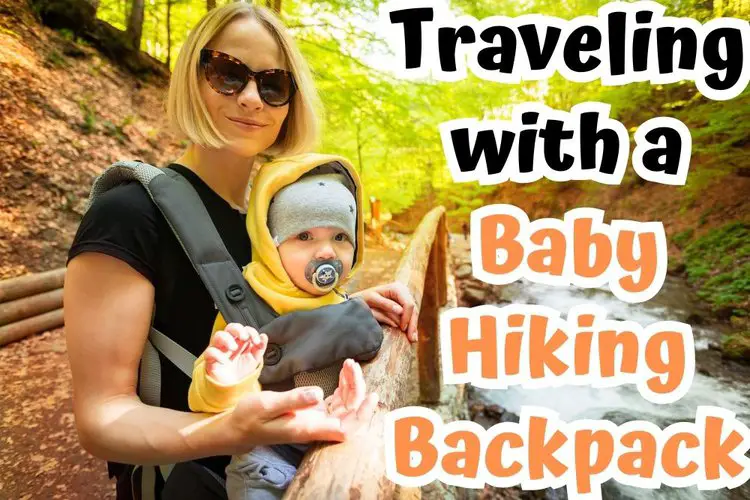As a first-time mom, Sarah was determined to continue her love of hiking, even with her new baby in tow.
She had researched extensively online and had settled on a hiking backpack for babies that promised to be comfortable, sturdy, and safe.
The day of their first hike arrived, and Sarah packed the backpack with all the essentials – extra diapers, wipes, snacks, sunscreen, and a hat for her little one. She also brought along a lightweight blanket to use as a sunshade, just in case.
They set out on the trail, with Sarah feeling a mix of excitement and nervousness. The backpack felt heavy at first, but she quickly adjusted to the weight and found that it distributed the load evenly across her back and hips.
As they hiked, Sarah pointed out the different trees, plants, and animals they saw along the way. Her baby cooed and gurgled in response, seeming to enjoy the fresh air and new surroundings.
After a while, they reached a clearing with a stunning view of the valley below. Sarah carefully lifted her baby out of the backpack and held her up so she could see the view too. The baby’s eyes widened in wonder, and Sarah felt a surge of pride and joy.
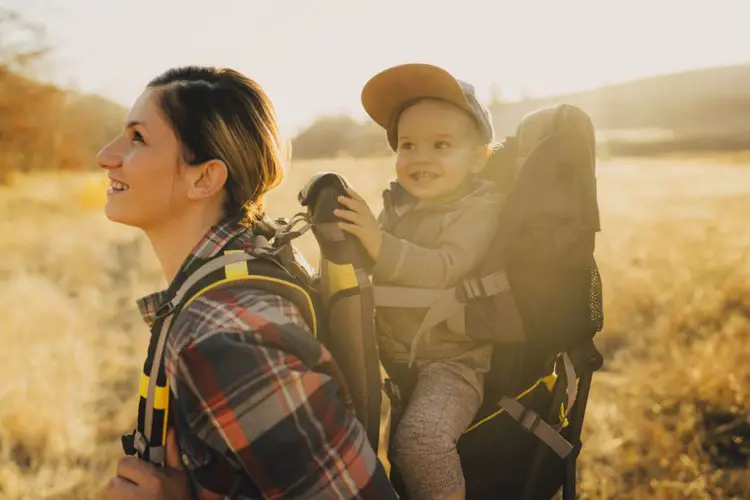
As they continued on the trail, they encountered a few rocky patches and steeper slopes. Sarah slowed her pace and took extra care to maintain her balance, making sure her baby was secure in the backpack at all times.
At one point, the trail became particularly steep, and Sarah felt her heart pounding in her chest. But she took a deep breath and reminded herself that she could do this. She focused on taking one step at a time and kept her eyes fixed on the trail ahead.
Finally, after a few hours of hiking, they reached the end of the trail. Sarah and her baby had made it! They sat down on a nearby rock and shared a snack, with Sarah feeling proud of herself and grateful for the experience.
As they began their hike back down the trail, Sarah felt a sense of contentment and peace.
She knew that this was just the beginning of their hiking adventures together, and she couldn’t wait to explore more of the great outdoors with her little one by her side.
Contents
Some Important Notes
For infants younger than 6 months old: It’s generally recommended that babies younger than 6 months old should not be taken on hikes.
This is because their neck muscles are not strong enough to support their head and the constant movement and jostling of hiking can be dangerous for their delicate necks.
For babies between 6-12 months old: This is a good age range to start introducing your baby to hiking.
However, keep in mind that your baby may not be able to sit up on their own yet, so you’ll need a hiking backpack that provides good head and neck support.
For toddlers 12-24 months old: As your baby grows and becomes more mobile, you’ll need to adjust your hiking strategy accordingly.
Toddlers this age may want to explore on their own, so be prepared to stop frequently and let them out of the backpack to explore.
Regardless of your baby’s age, it’s important to monitor their behavior and make sure they are comfortable throughout the hike.
Make sure to pack plenty of water and snacks, and plan your route carefully to avoid difficult terrain or overly long hikes.
You may want to read more about these related things:

How to Travel with a Baby Hiking Backpack: Tips and Tricks
As a parent, you want to expose your child to the great outdoors as early as possible. But how can you do that while keeping your hands free and your baby safe and comfortable?
The answer is simple: use a baby hiking backpack! In this article, we’ll show you all the ways to travel with a baby hiking backpack, from choosing the right one to packing it efficiently.
Whether you’re planning a day hike or a multi-day adventure, we’ve got you covered.
1. Choose the Right Baby Hiking Backpack
Before you start packing, you need to make sure you have the right baby hiking backpack for your needs. Here are some factors to consider:
- Size and weight capacity:
Choose a backpack that is appropriate for your baby’s size and weight.
The backpack should have a weight capacity that can accommodate your baby’s weight plus the weight of the gear and supplies you’ll be carrying.
- Comfort features:
Look for a backpack with padded shoulder straps, a waist belt, and an adjustable back panel for maximum comfort.
The backpack should distribute weight evenly across your hips and shoulders, and the straps should be easily adjustable to ensure a secure fit.
- Sun protection:
Choose a backpack with a sunshade or a hood to protect your baby from the sun’s harmful rays. This will also help keep your baby cool and comfortable during the hike.
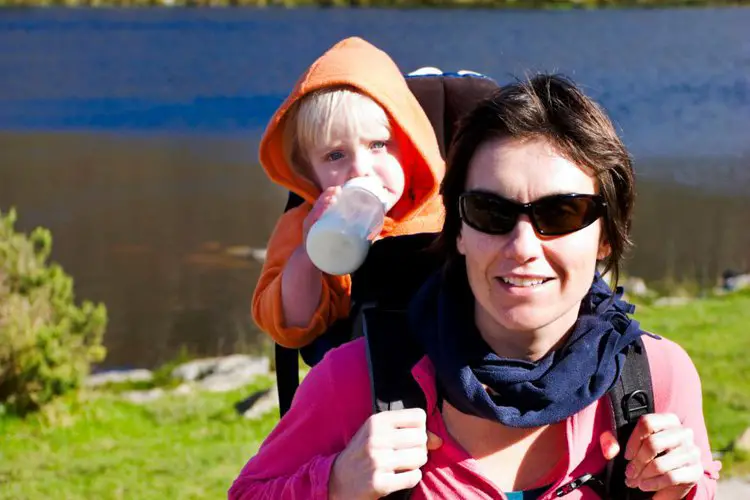
- Storage and organization:
Look for a backpack with multiple compartments and pockets for storing gear, supplies, and snacks.
The backpack should also have easy-to-access pockets for items you need to reach quickly, such as water bottles or diapers.
- Durability and safety features:
Choose a backpack that is made of high-quality materials and has safety features such as a sturdy frame and a secure harness system for your baby.
- Trial run:
Before your hike, try the backpack on and take your baby for a short walk around your neighborhood or a local park.
This will help you get used to the backpack and ensure that it is comfortable for both you and your baby.
Last update on 2023-11-11 / Affiliate links / Images from Amazon Product Advertising API
2. Pack the Essentials
Once you have the right backpack, it’s time to pack the essentials. Here’s what you’ll need:
- Diapers and wipes:
Bring enough diapers and wipes to last for the duration of the hike, plus a few extras just in case. Pack them in a plastic bag or a waterproof pouch to keep them dry.
- Baby food and snacks:
Pack plenty of baby food and snacks to keep your baby nourished and happy during the hike. Bring foods that are easy to eat and won’t spoil in the heat, such as fruit pouches, crackers, and baby cereal.
- Water:
Bring plenty of water for you and your baby to stay hydrated during the hike. Pack a water bottle or hydration bladder for yourself, and a sippy cup or bottle for your baby.
- Capacity: 3 Liter (100oz), 100% odorless, tasteless, BPA- Free EVA material
- Might be the most rigid hydration bladder on the market: 0.6mm extra thick liner is...
- Double opening design. As the most popular design for high end hydration systems in recent years,...
Last update on 2023-11-11 / Affiliate links / Images from Amazon Product Advertising API
- First aid kit:
Pack a small first aid kit with essentials such as band-aids, antiseptic wipes, and insect repellent.
Be sure to also pack any medications that your baby may need, such as fever reducer or allergy medicine.
- DESIGNED BY EMERGENCY CARE EXPERTS: Be emergency-ready with our 100-piece first aid kit. Developed...
- POCKET-SIZED & PORTABLE: Our emergency first aid kit is lightweight and compact (7.5" x 5.2" x 1.5")...
- PREMIUM-QUALITY MEDICAL SUPPLIES: We manufacture our outdoor first aid kits in a modern facility,...
Last update on 2023-11-11 / Affiliate links / Images from Amazon Product Advertising API
- Sun protection:
Pack a hat, sunscreen, and sunglasses to protect your baby from the sun’s harmful rays. Consider also bringing a lightweight blanket or cover to provide additional shade.
- Extra clothing:
Bring an extra set of clothes for your baby in case of spills, accidents, or weather changes. Consider also bringing a light jacket or sweater for you and your baby in case the weather turns cool.
- Toys and entertainment:
Bring a few toys or books to keep your baby entertained during the hike. Consider also bringing a portable music player or white noise machine to help your baby nap.
3. Practice Makes Perfect
Before you hit the trail, practice wearing the backpack with your baby at home or in a safe, open area.
This will help you get used to the weight and balance of the backpack, and give your baby a chance to adjust to being carried in it.
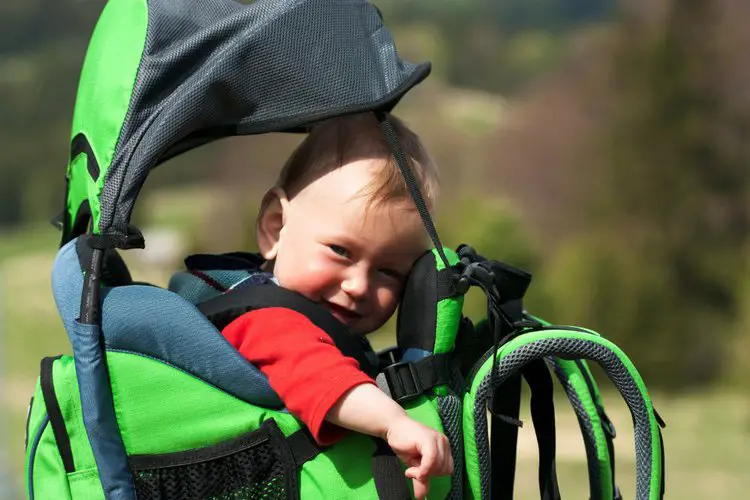
4. Choose the Right Trail
- Terrain:
Choose a trail with a moderate level of difficulty that is appropriate for your fitness level and the baby’s age.
Avoid trails with steep inclines, uneven terrain, or rocky paths that could pose a risk to you and your baby’s safety.
- Weather:
Check the weather forecast and plan your hike accordingly. Avoid hiking in extreme heat, cold, or wet conditions that could be uncomfortable or dangerous for your baby.
Choose a day with mild temperatures, clear skies, and little chance of precipitation.
- Trail length:
Consider your baby’s stamina and plan your hike accordingly. Start with shorter trails and gradually increase the distance as your baby gets used to hiking.
Also, factor in breaks for feeding and changing diapers.
- Facilities:
Look for trails with facilities such as restrooms, picnic areas, and water fountains. This will make it easier to take care of your baby’s needs during the hike.
- Time of day:
Plan your hike during the time of day when your baby is most alert and happy. This could be in the morning or afternoon, depending on your baby’s schedule.
5. Follow Safe Hiking Practices
To ensure a safe and enjoyable hike, follow these tips:
- Stay hydrated: Drink plenty of water, and offer your baby frequent sips as well.
- Take breaks: Take frequent breaks to rest and check on your baby.
- Watch for signs of distress: Keep an eye out for signs of overheating, dehydration, or discomfort in your baby, and adjust your pace or take a break if necessary.
- Stay on the trail: Stick to designated trails and avoid shortcuts or off-trail hiking.
- Maintain the trail’s natural beauty by taking all your trash with you and leaving the area as pristine as you found it. Remember to ‘leave no trace’ and respect the environment for others to enjoy
- Enjoy the journey: Take time to appreciate the beauty of nature and the joy of spending time with your baby.
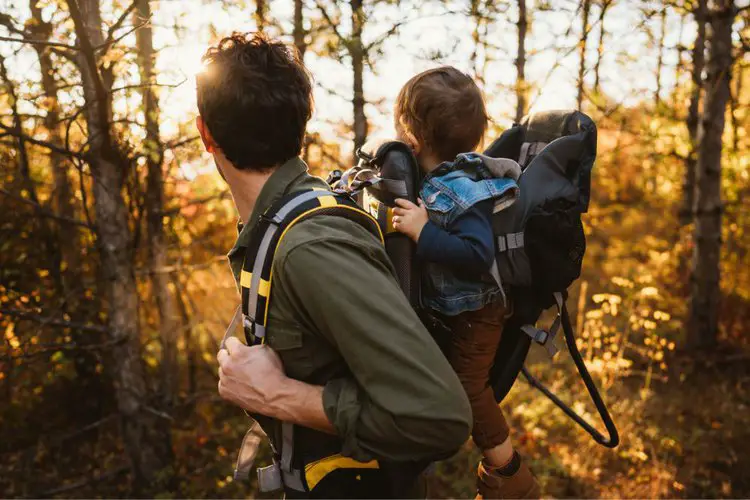
Last words
In conclusion, traveling with a baby hiking backpack can be a fun and rewarding experience for both you and your child.
By choosing the right backpack, packing the essentials, practicing at home, choosing the right trail, and following safe hiking practices, you can ensure a safe and enjoyable

